Abundance: common
What: berries, seeds
How: raw, jam, jelly
Where: landscaping shrub
When: early spring
Nutritional Value: Vitamins A, Bs, C, E, lycopene, flavanoids, fatty acids, and protein
Small elaeagnus shrub.
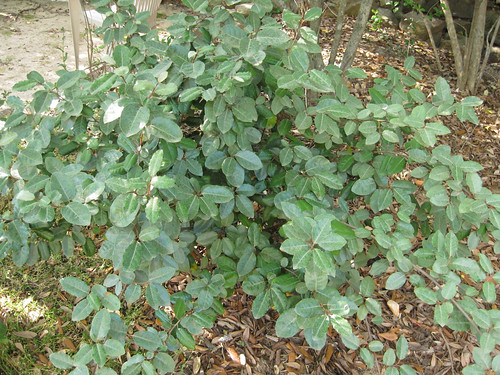
One wonderfully-scented elaeagnus flower appears at the base of each leaf around Thanksgiving in the Houston area.
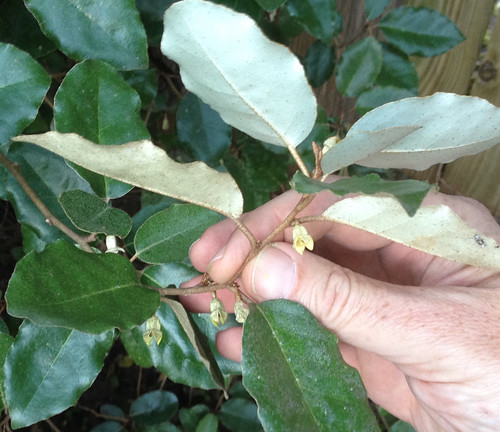
Elaeagnus berries are ripe in mid-to-late February.
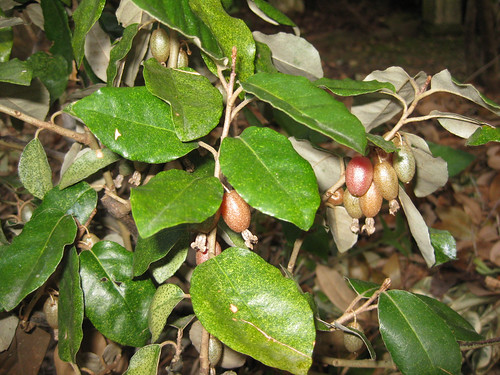
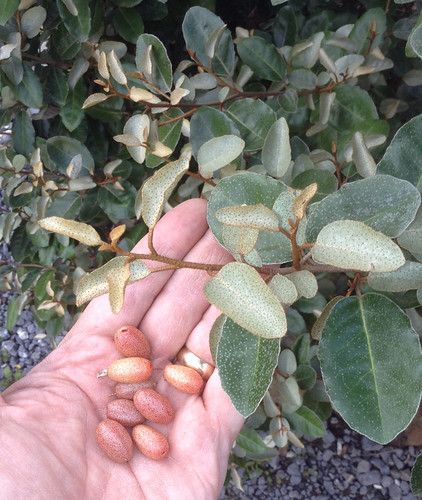
Close-up of elaeagnus's mottled-red berries
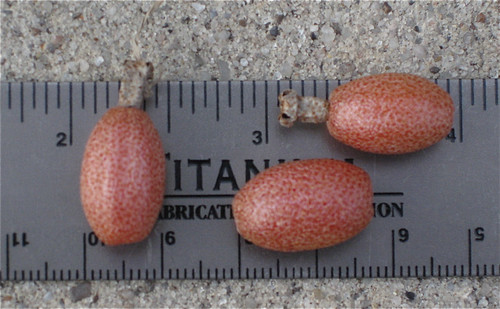
Top of elaeagnus leaf.

Bottom of elaeagnus leaf.
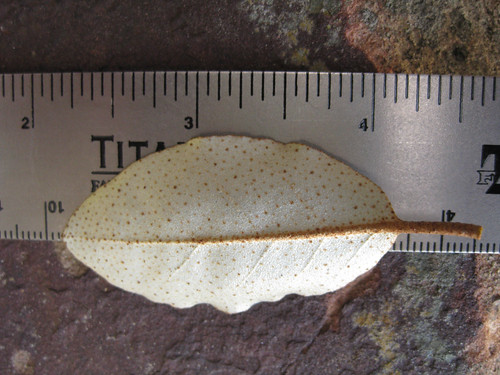
Standing in the front yard of many Texas house, elaeagnus bushes are a staple of suburban home landscaping. Their thick, evergreen foliage and tolerance of many growing conditions coupled with their low cost makes them attractive. In the fall their small but plentiful white/yellow flowers entice bees. In late winter/early spring the small, football-shaped berries are ready to eat. The top of elaeagnus leaves are green with gray spots while the bottom of the leaf is gray with copper-colored spots. Ripe berries are silvery with many tiny red dots. These berries are hidden towards the center of the bush rather than exposed and visible so you may not notice them unless you lift the branches to look.
The berries have a wonderful sweet/tart taste with a hint of astringency. Most people considering elaeagnus multiflora to have the best flavor. They are nutritional powerhouses loaded with a number of good compounds including a high concentration of lycopene. The seeds contain omega-3 fatty acids but they can be bitter in flavor and so unpalatable.
The flesh of the berries make a good jam, jelly, and fruit leather. There's no reason they couldn't be made into wine.
Buy my book! Outdoor Adventure Guides Foraging covers 70 of North America's tastiest and easy to find wild edibles shown with the same big pictures as here on the Foraging Texas website.

